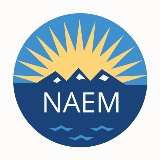Ready, Aim, Communicate: Five Tips for Effective Engagement

To understand how to effectively leverage communications to build a strong EHS culture, we spoke with Steve David, Senior Manager of Air Strategy at The Mosaic Co. He gave us his tips for making sure the message hits the mark.
- Build Trust with your Audience (or Borrow it from Others): Before your audience will listen to your message, Mr. David says, they need to trust you. If you are presenting to a new group, consider first building a rapport with the trusted leaders or influencers. "Their trust in me and my message is surrogated by the presence of the supervisor or the plant manager. If they see the person that they trust in the room and in agreement with the message, you’re then going to be able to hold that audience. If that person for some reason isn’t there and it’s just you in a group of folks who have no clue why they’re there and really don’t want to be there, then you’ve got a tough row to hoe at that point."
- Use Accessible Language: As technical experts who are immersed in complicated issues, it can sometimes be difficult to make these ideas understandable to outside audiences. This is particularly true of new regulations, Mr. David says,
which may sound like a foreign language to the operations folks who are responsible for following them. EHS leaders, he say, "have to be able to interpret between them to ensure the best outcome for all. For any effective communication to occur,
you have to understand your goal or message, then communicate that message succinctly. After all, they’re the ones on the front lines and they have to do the final implementation."
This also applies to internal EHS communications as well, which often are riddled with internal jargon. "We use almost every acronym under the sun," Mr. David said. "Although convenient to use when speaking with other environmental practitioners, they quickly form a barrier to many audiences. If you start speaking in that kind of language, you’ve lost the folks immediately with little chance of getting them back. - Choose the Right Medium for the Message: "We look to various media to provide support for our message. In the first instance, media may be used only sparingly if it is a one-no-one conversation. Sitting down with a particular individual
and trying to train that individual on how best to perform a task is such an example where verbal and written documents work well. In an informal setting, say in an operating control room or in discussions in an "elevator." A very short discussion
is all that may needed. Whatever the venue, whoever the audience, you must be ready to bring the message to the right level."
- Send up a Test Balloon: If you are communicating with a new audience, or you have something important to say, Mr. David suggests sharing the communication in advance with a small group of influencers. "That’s a great way to
anticipate questions and have answers available. If that leader is asking a question, their staff are likely to have those questions as well. If no one asks a question, you can modify your presentation by asking the audience a question or two.
This ensures that the important points are well-understood."
- Use Storytelling to Make the Connection: Simply explaining the parameters of a new regulation or program may fail to bring the impact to life for your audience. To make a meaningful connection, Mr. David suggests telling stories that demonstrate the intended outcome, as Mosaic does when talking about the products it makes. "One such example I have used was related to me by one of our agronomists. The story he told me was that a farmer hugged the agronomist for helping increase production on the quarter acre of land that his family had been farmer for three generations," he explained. "People begin to understand that ‘Oh, what I’m making today in this big old manufacturing facility and everything that we do, is a big deal for that guy."
Steve David has more than 30 years of experience in environmental permitting and compliance in all environmental media, including experience in environmental agency relations and negotiations at all levels of government; health and hazard risk assessment; and operations and business management. He has developed and implemented facility and company-wide programs to ensure long-term compliance, and has successfully negotiated some of the most complex and innovative environmental permits in the United States.
Topics:
Leadership & Careers
Related
About the Author

NAEM Staff
The National Association for Environmental, Health and Safety, and Sustainability (EHS&S) Management (NAEM) empowers corporate leaders to advance environmental stewardship, create safe and healthy workplaces and promote global sustainability. As the
leading business community for EHS&S decision-makers, we provide engaging forums, a curated network, peer benchmarking, research insights and tools for solving today’s corporate EHS&S management challenges. Visit us online at naem.org.

